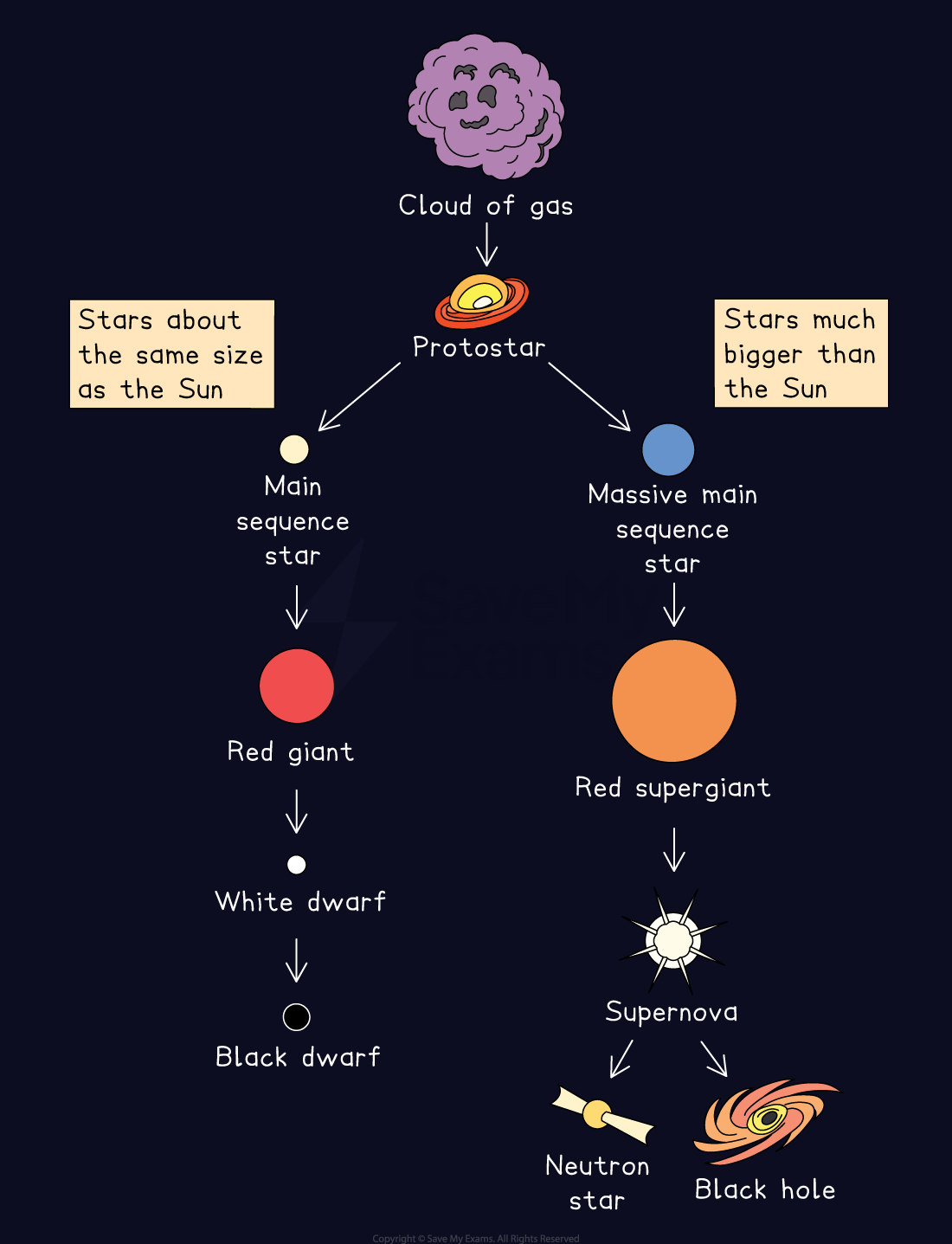The Life Cycle of Solar Mass Stars (AQA GCSE Physics): Revision Note
Exam code: 8463
The Life Cycle of Stars
Stars go through a sequence of evolutionary stages, known as the life cycle of a star
All stars follow the same initial stages:
nebula → protostar → main sequence star
However, the final stages of a star's life cycle depend on its size
The diagram below shows the life cycles of stars which are:
about the same size as the Sun
much bigger than the Sun
Summary of the life cycles of stars

The life cycle of a star depends on whether it is similar in size to the Sun or much larger
Did this video help you?
Solar Mass Stars
After the main sequence, stars which are similar in size to the Sun go through the following evolutionary stages:
red giant → planetary nebula → white dwarf
Red giant
After several billion years, the hydrogen fuel used for nuclear reactions begins to run out
Once this happens, the rate of fusion decreases, which causes the core to shrink and heat up
As the energy produced by fusion decreases, the inward force due to gravity becomes greater than the outward force due to the thermal pressure
Eventually, the star becomes a red giant when the core becomes hot enough for helium to fuse into heavier elements, such as carbon and oxygen
The energy released by re-ignited fusion reactions causes the outer layers of the star to expand and cool
White dwarf
Once the helium in the core begins to run out, fusion reactions cannot continue
The star becomes unstable, and the core collapses under its own gravity
The remnant of the core is known as a white dwarf
The white dwarf will be cooling down, and as a result, the amount of energy it emits will decrease
Black dwarf
Once the star has lost a significant amount of energy, it becomes a black dwarf
It will continue to cool until it eventually disappears from sight
Life cycle of a solar mass star

The life cycle of a star about the same size as the Sun
Examiner Tips and Tricks
The term nebula in astronomy refers to any cloud of gas or dust. The nebulae that form stars are made from hydrogen, whilst the ones that are formed when stars die are made from much heavier elements, such as helium. These are known as planetary nebulae, but you do not need to know about them for the AQA GCSE exam.
Remember that the lifecycle of a solar mass star starts when it is a nebula up till a black dwarf. You need to learn each step, but the life cycle is also slightly different for a star that is larger than our Sun!

Unlock more, it's free!
Did this page help you?